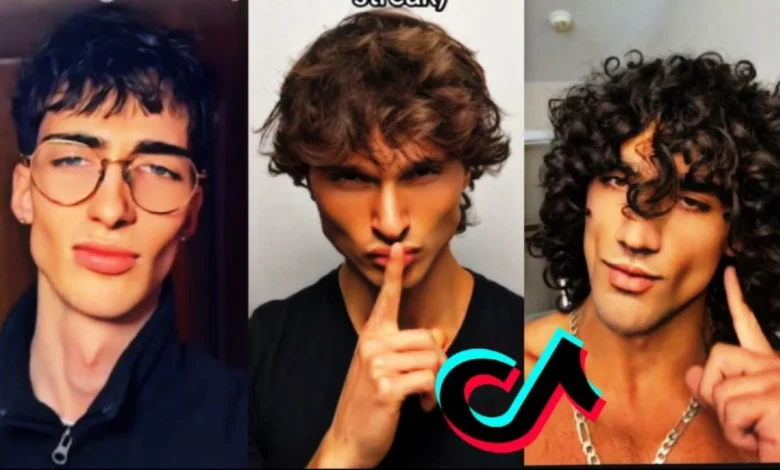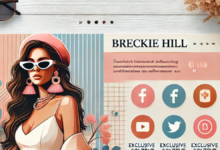Mewing Meme: How a Simple Technique Turned Into a Viral Phenomenon

Introduction: The Rise of the Mewing Meme
The internet is filled with various trends, some that come and go quickly and others that seem to stick around, gaining a life of their own. One such phenomenon that has recently captured the attention of millions is “mewing.” While the term itself originally referred to a specific technique for improving jaw alignment and facial structure, it has evolved into a viral meme. In this article, we will dive deep into the origins, evolution, and cultural impact of the “mewing meme.”
What began as a relatively obscure concept in orthodontics has transformed into a mainstream meme that has garnered attention across social media platforms. From TikTok to Reddit and beyond, the mewing meme has taken on a life far beyond its clinical origins. But what is mewing, and why has it become the subject of internet humor? How has it evolved from a self-help trend to a subject of memes and online banter?
Let’s explore these questions and more in this in-depth article.
What is Mewing? The Origins of the Technique
Before diving into the meme culture surrounding mewing, it’s essential to understand the technique itself and how it became popular in the first place.
The Basics of Mewing
Mewing is a technique popularized by Dr. John Mew, a British orthodontist, who promoted the idea of improving facial appearance and health through proper tongue posture. According to Dr. Mew, the tongue should rest against the roof of the mouth—this position, when maintained over time, supposedly helps improve the alignment of the jaw and facial bones. He argued that incorrect tongue posture (for instance, resting the tongue at the bottom of the mouth) could lead to a variety of issues, such as a recessed chin, poor jaw alignment, and even breathing difficulties.
The practice of mewing gained traction in the 2010s, particularly through online forums, YouTube videos, and social media platforms. Influencers and people interested in improving their facial aesthetics began sharing results and tips about mewing, claiming that it could even alter the shape of one’s face and jawline.
Mewing’s Appeal: The Promise of a Better Jawline
The primary allure of mewing lies in its promise of achieving a more defined jawline and improved facial aesthetics without the need for invasive procedures like surgery. This appeals particularly to young people and those who are interested in enhancing their appearance. It’s almost like a self-help technique that promises results with minimal effort—just some conscious awareness of tongue posture throughout the day.
However, despite its popularity, the scientific evidence supporting the claims made by proponents of mewing is limited. Many experts in the dental and orthodontic fields have been cautious about endorsing the technique, noting that there’s little clinical research to back the idea that consistent tongue posture can significantly change the structure of your face over time.
But this uncertainty hasn’t stopped mewing from becoming a widespread trend.
How Mewing Became a Meme
Mewing might have started as an orthodontic technique, but it didn’t take long before it was co-opted by the internet and turned into a meme. The evolution of mewing from serious health advice to a lighthearted, often comical subject can be traced through several key internet platforms and cultural moments.
From Orthodontic Advice to Internet Culture
In the early stages of the mewing trend, YouTube videos and forums discussed the technique in a fairly serious tone. Influencers, orthodontists, and health enthusiasts shared their experiences with the method, and some claimed to see noticeable improvements in their jawlines after months of practice. As more and more people became aware of mewing, it began to spill over into the realm of meme culture.
The first signs of mewing turning into a meme came from online communities like Reddit, where users began to mock the over-the-top claims of dramatic facial changes through mewing. A popular format emerged, where people would post “before and after” images of their faces, often with exaggerated and humorous results. These memes would poke fun at the unrealistic expectations that came with mewing, often mocking the notion that anyone could achieve a movie-star jawline by simply pressing their tongue against the roof of their mouth.
The Mewing Meme on TikTok
TikTok is one platform where trends evolve quickly, and the mewing meme quickly gained traction there. On TikTok, users would post videos demonstrating their mewing techniques, often accompanied by captions like “mewing for a better jawline” or “mewing transformation,” followed by comedic or exaggerated reactions. These videos, which often featured over-the-top expressions and music, became wildly popular.
TikTok’s short-form video format made it easy for creators to show exaggerated before-and-after comparisons of their supposed mewing results. The humor often came from the overly dramatic claims of how mewing could “transform” someone’s face, making it a subject of endless parody.
The Role of Memes in Amplifying the Trend
Meme culture thrives on humor, relatability, and absurdity, and mewing became an ideal subject for such content. As the technique itself seemed too simple (and in some cases, too good to be true) to be taken entirely seriously, it naturally became a target for ridicule and parody. Over time, meme creators began to produce content that made fun of the unrealistic expectations surrounding mewing.
For example, one common meme format involved showing a side-by-side comparison of a “before” picture with a totally normal face and an “after” picture where the person had their tongue pressed up against the roof of their mouth, with exaggerated expressions or absurd results. This would often be paired with humorous text, like “When you’ve been mewing for 3 days and now you look like a superhero.”
The Impact of Mewing Memes on Online Culture
The mewing meme has grown far beyond its humble beginnings as an orthodontic technique. Today, it’s a widely recognized internet trend with a significant cultural impact.
Mewing as a Symbol of Self-Improvement Culture
The mewing meme can also be seen as a reflection of the broader self-improvement culture that has become prominent on the internet. The meme satirizes the idea of achieving personal transformation with minimal effort, which is a recurring theme in many self-help trends. Mewing, in this context, is a perfect example of how the internet amplifies unrealistic promises—where something as simple as tongue posture is sold as a shortcut to personal and physical improvement.
While the meme often pokes fun at these lofty claims, it also reflects the growing obsession with appearance, especially among younger generations. The desire to have the “perfect” jawline or facial features is part of a larger conversation about beauty standards, and the mewing meme plays into this discourse by mocking the extreme lengths to which some individuals go to achieve these ideals.
The Virality of Mewing Memes
What makes the mewing meme so effective is its virality. The technique is simple to understand, easy to parody, and relatable to a wide audience. Memes are often shared because they are humorous, shareable, and relevant to a large group of people. In this case, the mewing meme is relatable to anyone who has ever been interested in beauty trends or self-improvement hacks.
The rapid spread of mewing memes also speaks to the internet’s tendency to amplify niche trends and make them mainstream. What started as a small conversation about orthodontics has evolved into a viral sensation, touching on everything from jawline envy to the pursuit of unrealistic beauty standards.
Influence on Social Media and Influencers
Influencers and content creators have played a major role in popularizing the mewing meme. Whether it’s on TikTok, Instagram, or YouTube, many influencers have used mewing in their videos as a joke, a challenge, or a humorous commentary on trends in health and beauty. The satirical nature of these videos often reinforces the meme’s humor—showing that they too are aware of the exaggerated claims surrounding mewing, and are willing to poke fun at it.
Some influencers even began to make exaggerated, over-the-top content where they claimed to achieve “instant” jawline transformations through mewing, knowing full well that they were making fun of the trend. This ironic and self-aware content has only added to the meme’s popularity.
you may also read
usainfotime.com





